Best AI Music Generators from Text That You Can Try

This article explores the best AI music generators from text, how they work, and how anyone can use them to turn their ideas into melodies. Whether you’re looking for MIDI files for professional editing or royalty-free tracks for your project, these tools cater to diverse needs.
1. Best AI Music Generators from Text
1. Donna AI
Donna AI is an innovative tool designed to transform text into full-fledged musical compositions. It uses natural language processing (NLP) to interpret detailed text descriptions.
Key Features
- Supports a variety of genres, from classical to modern electronic music.
- User-friendly interface with quick output generation.
- Integration with major music platforms for sharing and distribution.
Pros
- Easy to use for beginners.
- Versatile genre options.
Cons
- Limited customization for advanced users.
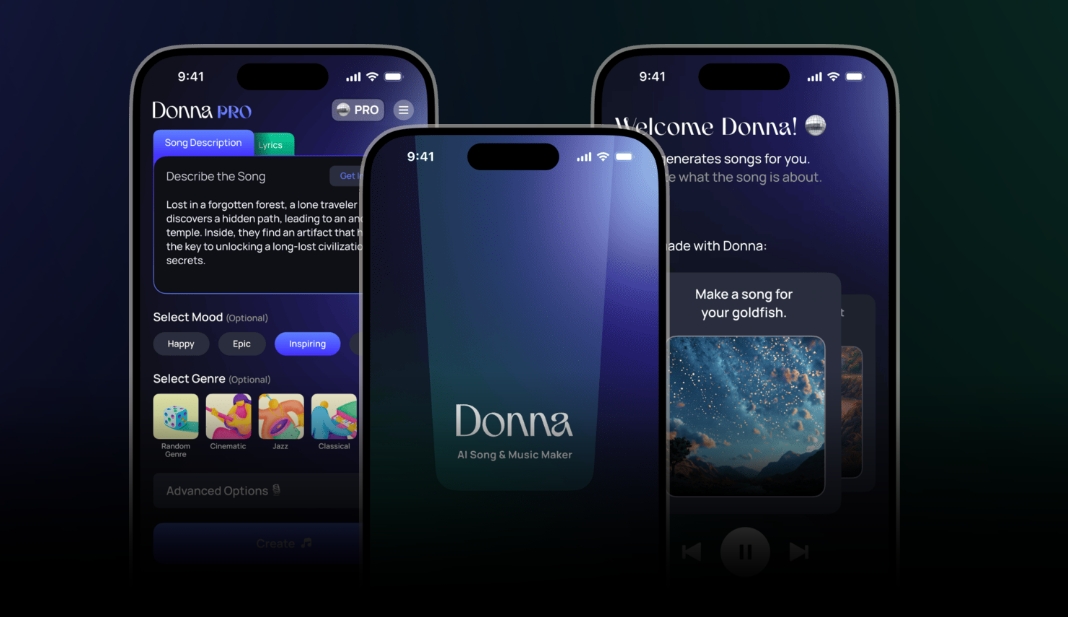
2. Udio AI
Udio AI excels at creating royalty-free background music for videos, podcasts, and advertisements. Its text-to-music capabilities are tailored for content creators.
Key Features
- Focused on generating ambient and background music.
- Options to adjust music length and intensity.
- Royalty-free licensing for commercial use.
Pros
- Perfect for content creators.
- Simplifies licensing for commercial projects.
Cons
- Limited to background and ambient styles.
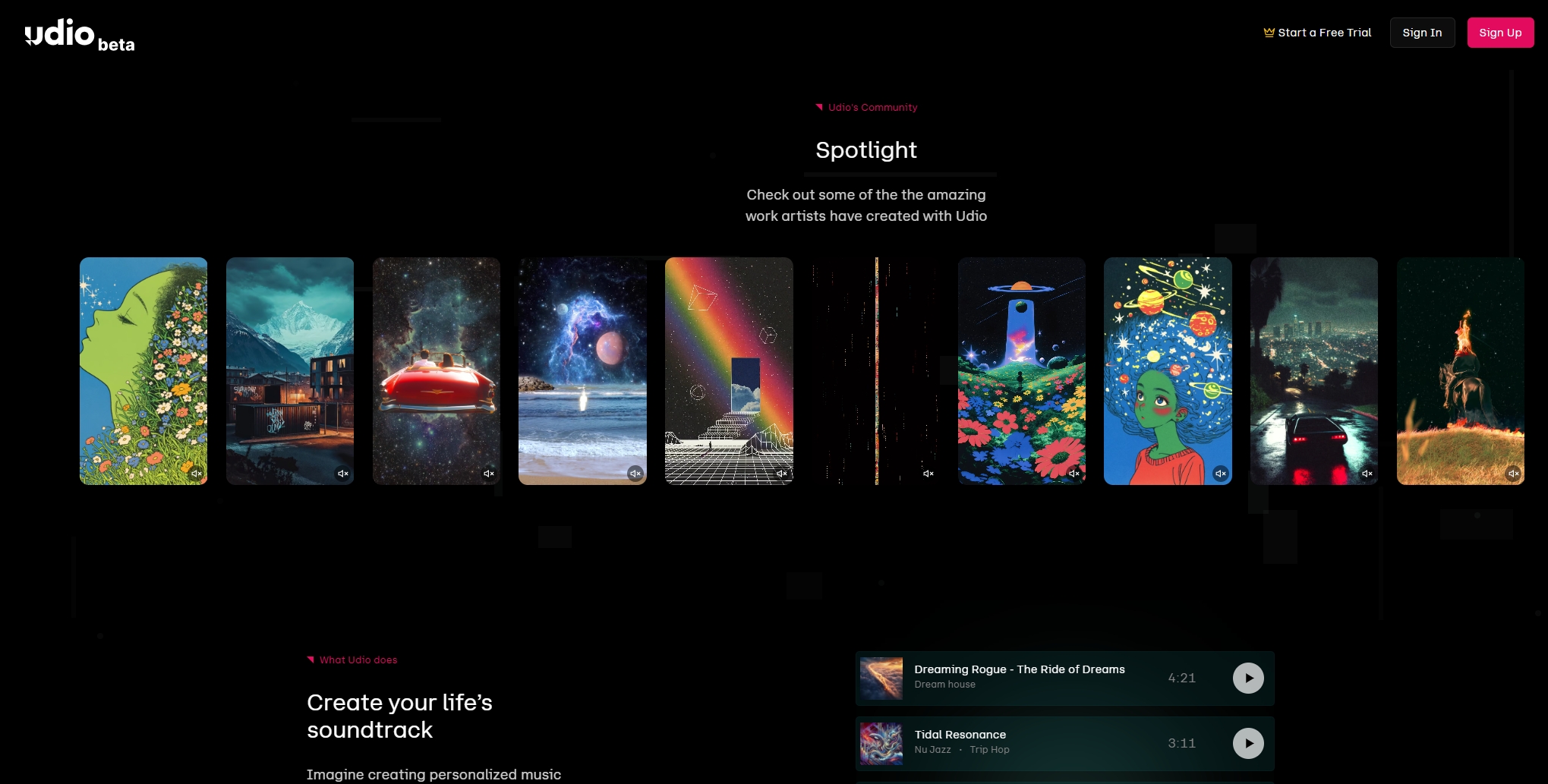
3. Soundraw
Soundraw is a versatile AI music generator that allows users to input textual descriptions and fine-tune the output. It is widely used by video creators and marketers.
Key Features
- Text-based input with adjustable parameters like tempo and mood.
- High-quality output suitable for professional use.
- Royalty-free music for personal and commercial projects.
Pros
- Highly customizable output.
- Intuitive and beginner-friendly interface.
Cons
- Limited free access; Requires a subscription for access to advanced features.
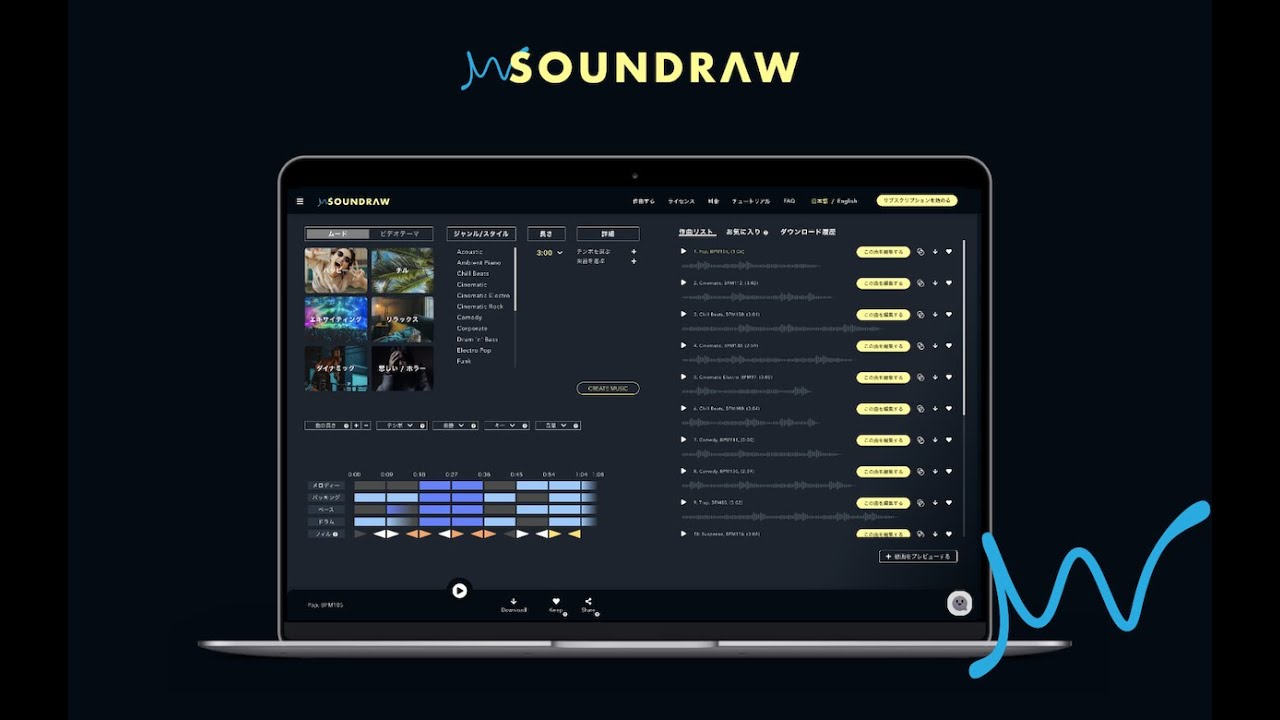
4. AIVA (Artificial Intelligence Virtual Artist)
AIVA is a powerful AI tool designed for creating personalized soundtracks and compositions. It’s popular among filmmakers and game developers.
Key Features
- Multi-genre support, including classical, pop, and cinematic.
- Generates MIDI files for professional editing.
- Offers predefined templates for quick composition.
Pros
- Produces professional-grade compositions.
- Comprehensive customization options.
Cons
- Steeper learning curve for beginners.
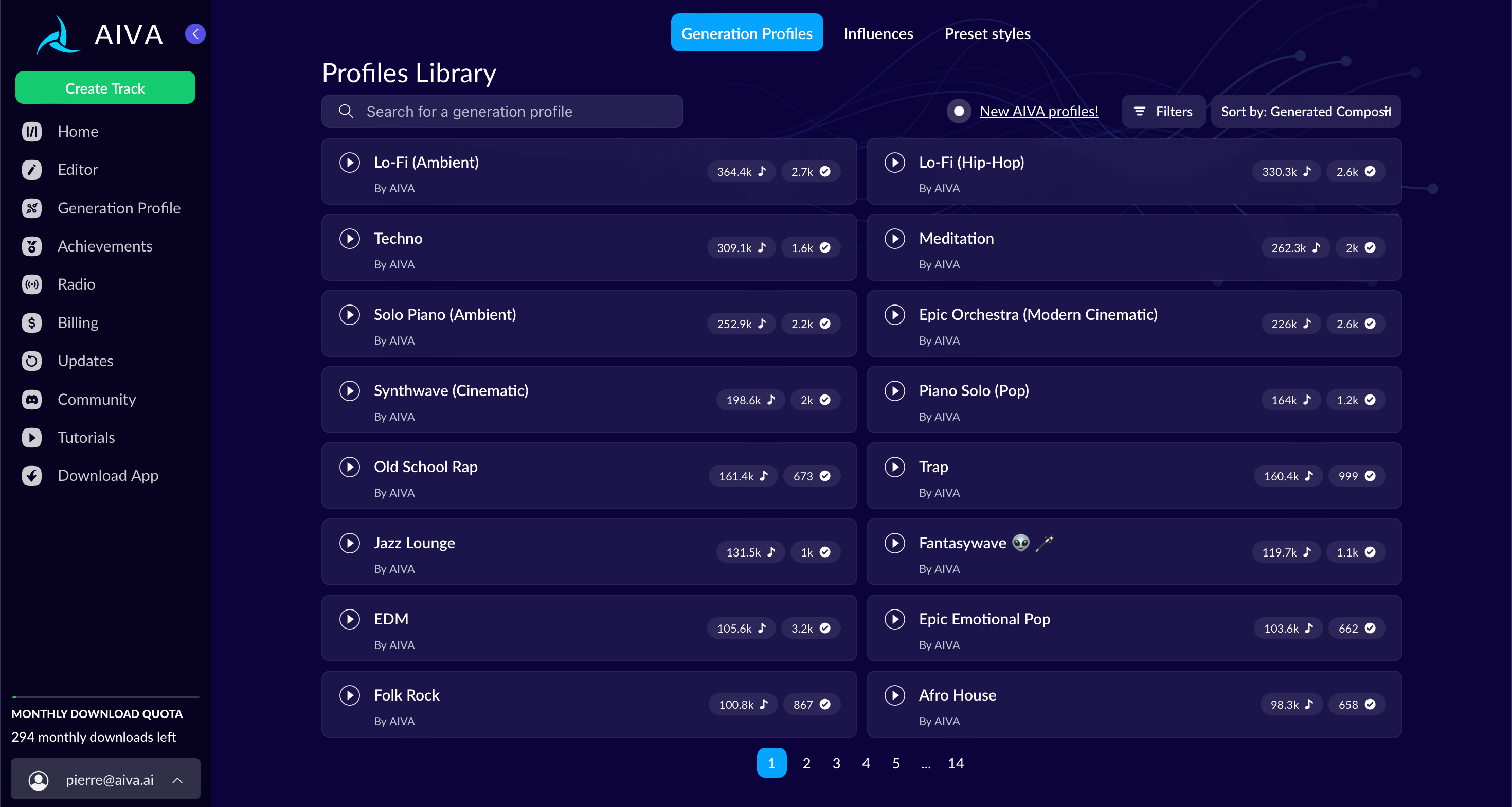
5. Boomy
With Boomy, making music is a breeze; the app lets users compose songs in a matter of seconds. It is popular among aspiring musicians and content creators looking for unique tracks.
Key Features
- Allows users to type descriptions and select genres.
- Integration with streaming platforms like Spotify.
- User-friendly interface with minimal setup required.
Pros
- Quick and easy music creation.
- Integration with popular platforms for monetization.
Cons
- Limited advanced features for professional users.
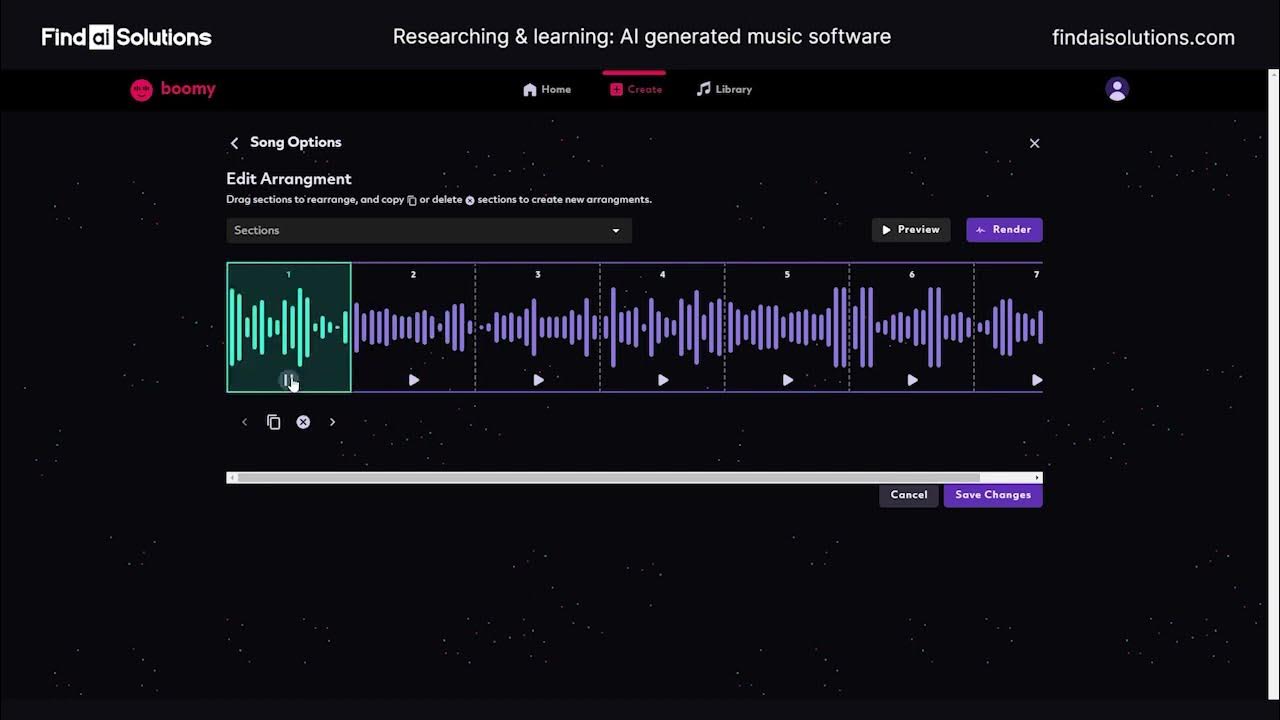
6. Mubert
Mubert combines real-time music generation with text-based inputs. It is widely used for creating royalty-free tracks for various projects.
Key Features
- Real-time AI music creation based on user prompts.
- Licensing options for personal and commercial use.
- Offers a wide variety of musical styles.
Pros
- Real-time generation ensures quick results.
- Perfect for dynamic, project-specific needs.
Cons
- Subscription required for full functionality.
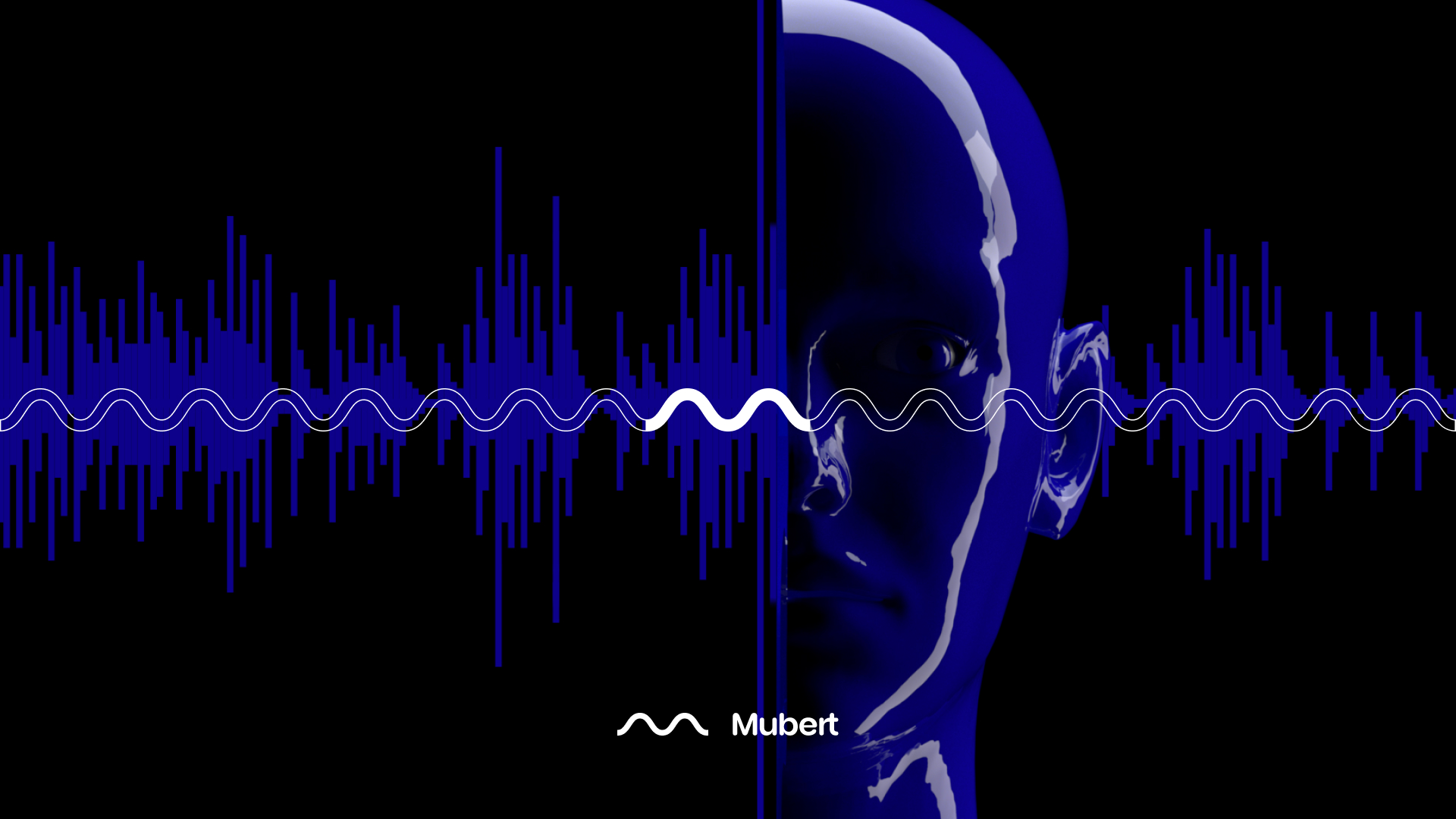
2. How to Turn Text to Music with AI Music Generators?
Using AI music generators to transform text into music is straightforward. Here’s a step-by-step guide:
Step 1: Choose the Right Tool
Select a tool that aligns with your needs. For instance:
- For MIDI files: MIDI AI or AIVA.
- For ready-to-use music: Mubert or Soundraw.
Step 2: Input Your Text Description
Type in a thorough text description of the song you’re looking for. Include specifics like:
- Mood (e.g., relaxing, energetic).
- Genre (e.g., classical, jazz, electronic).
- Tempo (e.g., fast, slow).
Step 3: Customize Parameters
Most platforms allow you to tweak settings such as key, tempo, instruments, and length to refine the output.
Step 4: Generate and Preview
Click the generate button to create your music. Preview the track and make adjustments as needed.
Step 5: Download and Use
Once satisfied, download the music. Many platforms offer royalty-free licenses, allowing you to use the track for personal or commercial projects.
3. Conclusion
AI music generators from text are transforming how we create music, making it accessible to anyone with a creative vision. Tools like MIDI AI, Donna AI, Udio AI, Soundraw, AIVA, Boomy, and Mubert cater to diverse needs, from professional music production to content creation.
Whether you’re a seasoned composer looking to experiment or a beginner aiming to create unique soundtracks, these platforms offer unparalleled convenience and creativity. As technology continues to advance, AI music generators are poised to become an essential tool in the creative industry, bridging the gap between ideas and musical expression.
So why wait? Explore these tools and let your words inspire melodies like never before.
